ECON 201 - Drexel University Midterm 2 Review
1/81
There's no tags or description
Looks like no tags are added yet.
Name | Mastery | Learn | Test | Matching | Spaced |
|---|
No study sessions yet.
82 Terms
When the price of one good rises...demand
decreases
price elasticity of demand
the percentage change in quantity of the demanded good by that results from a 1% change in price

elastic
the demand for the good is elastic with respect to price if its price of elasticity is greater than 1
inelastic
the demand for the good is inelastic with respect to price of elasticity of demand is less than 1
unit elastic
the demand for the good is unit elastic with respect to price if its price elasticity of demand equals 1
elasticity
used as a measure of the extend of the response of either quantity demanded or supplied
Formulas for elasticity
E(Y,X) = % change in Y/% change in X
= %∆Y/%∆X =
=∆Y/Y / ∆X/X =
= ∆Y/∆X* X/Y
(own-) price elasticity of demand
measures the percentage change in the quantity demanded that results from a one percent change in its price
Ordinary good
Normal good
(elasticity > 0)
Luxury /Superior good
(elasticity > 1)
Necessary good
(elasticity <1)
Giffen good
Inferior Good
(elasticity < 0)
perfect elastic
if its price of elasticity of demand is infinite along a horizontal demand curve
ex. Pepsi (v.s Coca-Cola)
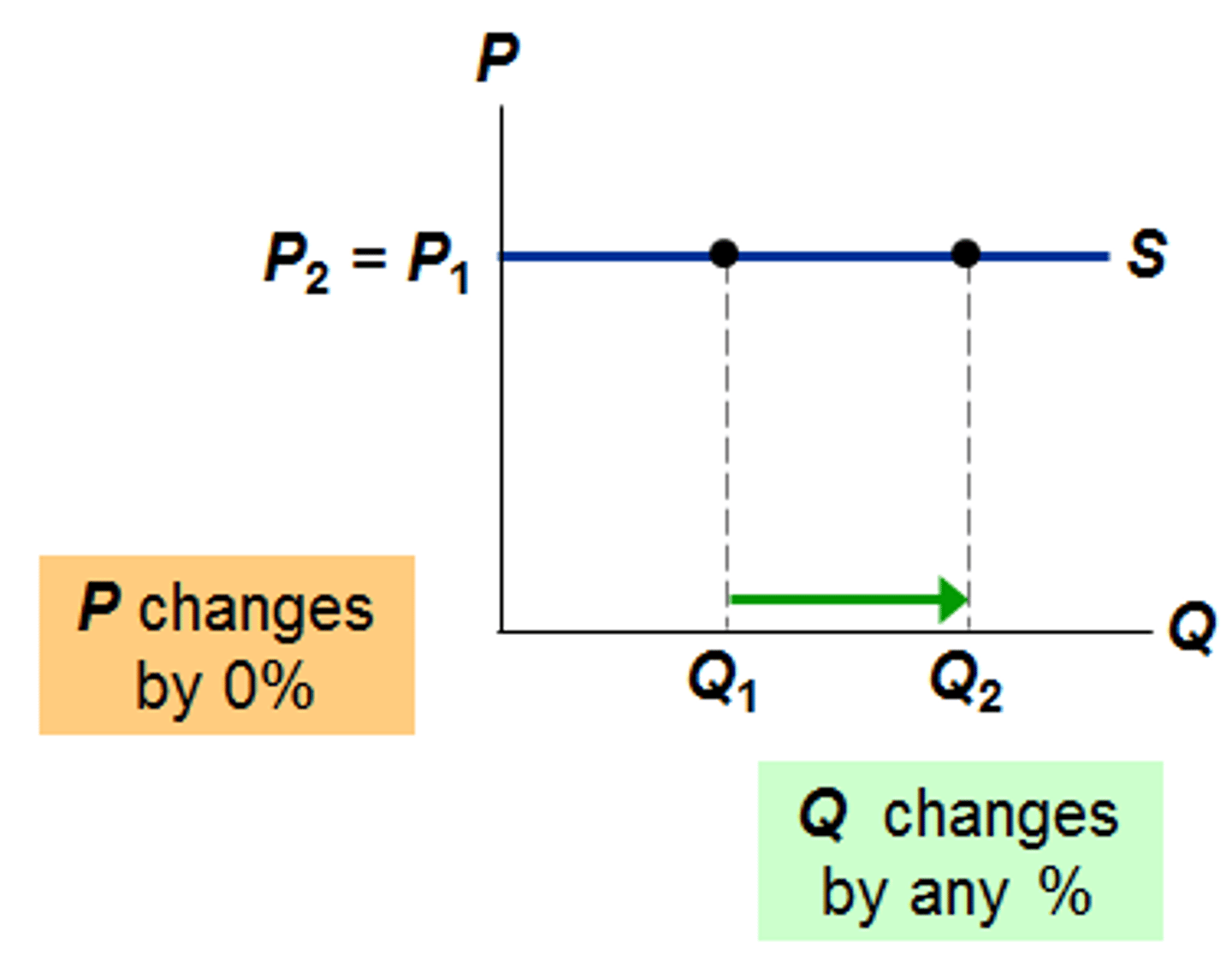
perfectly inelastic
with respect to price if its price elasticity of demand zero at every point along the demand curve
ex. Insulin
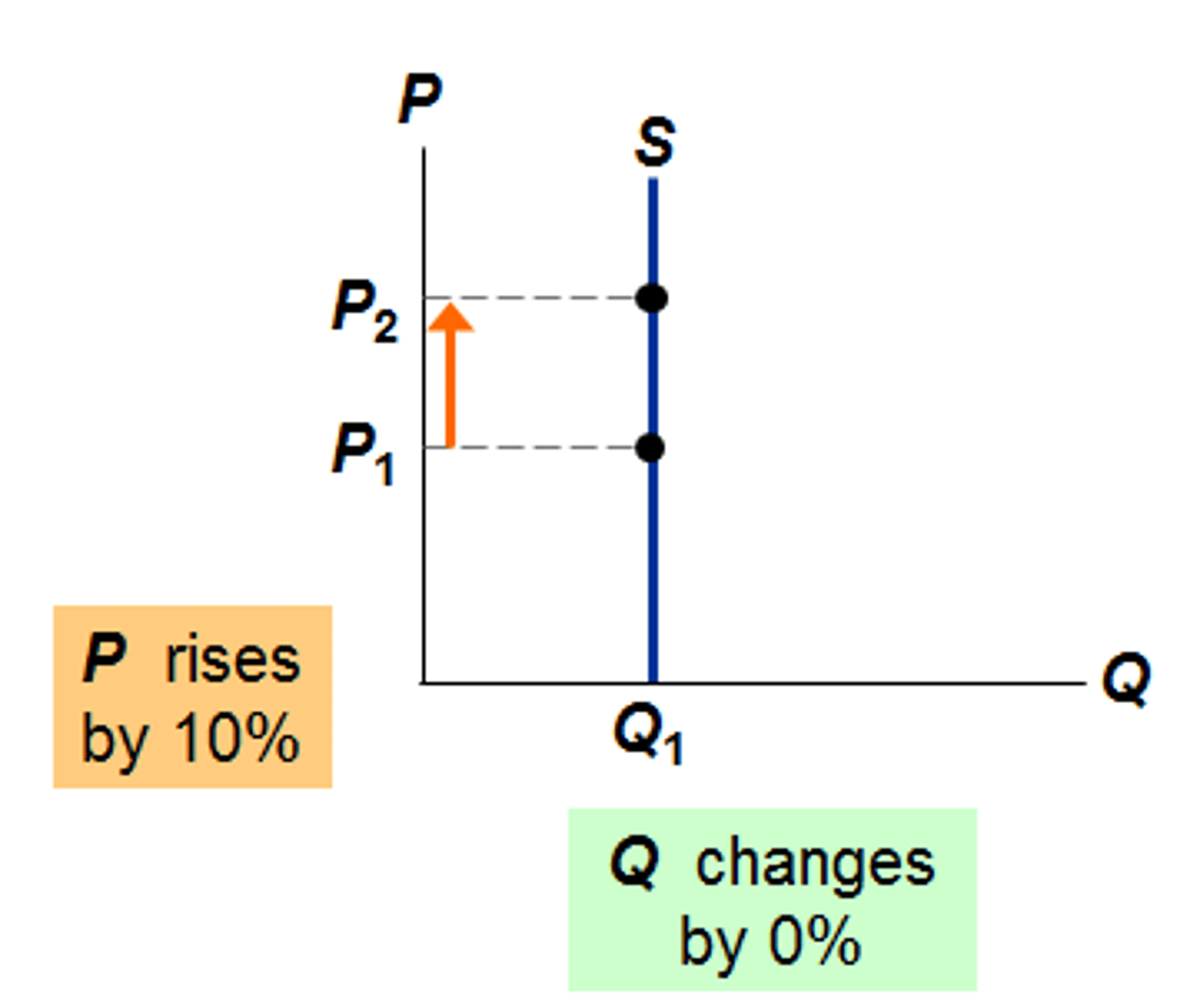
the flatter the demand curve
the more elastic is demand
steeper the demand curve
the less elastic is demand
∆Q/∆P
slope
consumer expenditures/producer revenue
change with changes in prices
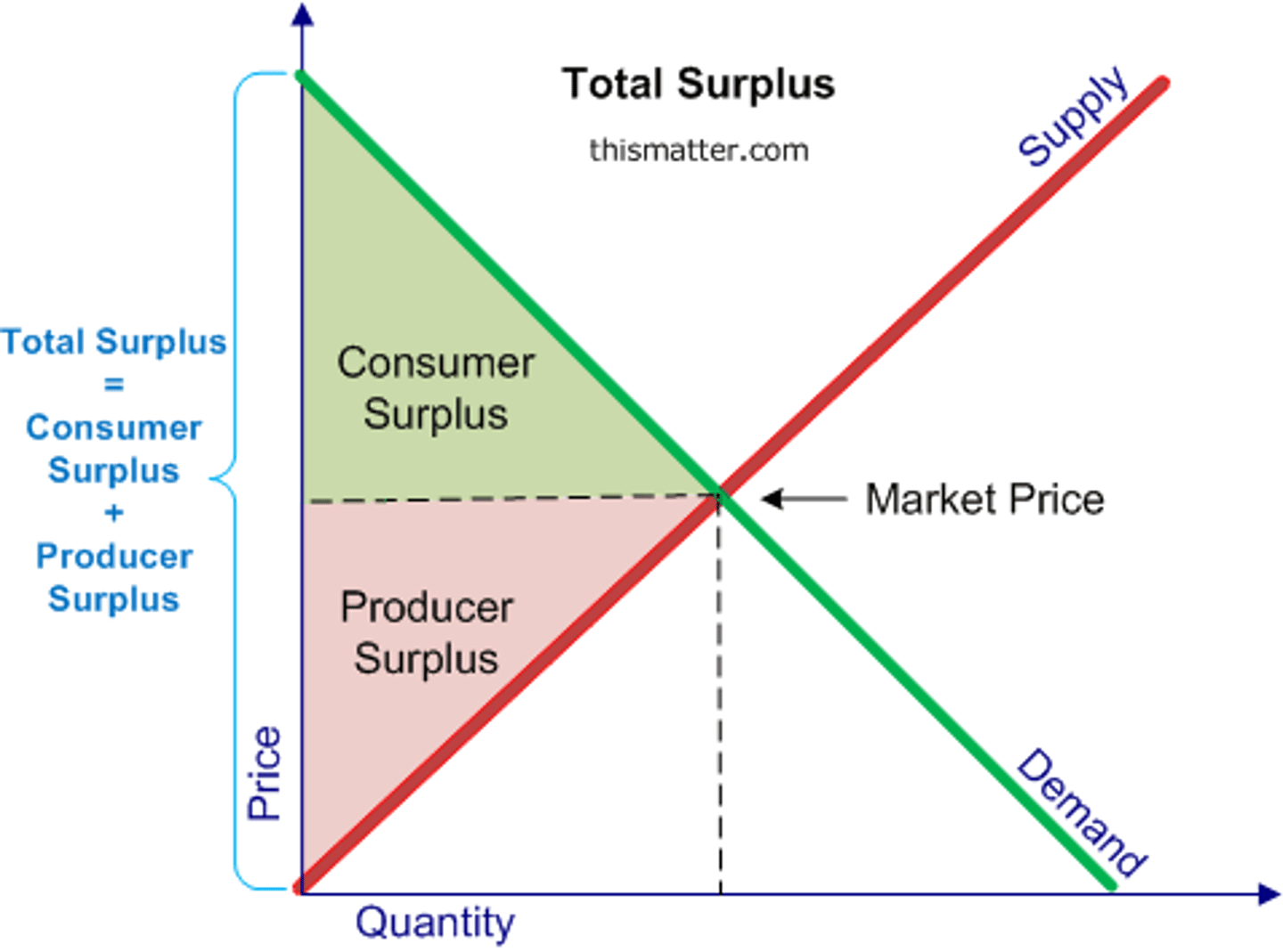
Consumer Expenditures
= P*Q= Total revenues
P
price
Q
quantity
if the price elasticity of demand is less than 1
changes in price and changes in total revenue always move in the same direction
if the price elasticity of demand is greater than 1
changes in price and changes in total revenue always move in opposite directions
If demand is...
elastic
with a price increase will...
reduce total expenditure
^P * vQ = v PQ
If demand is...
elastic
with a price reduction will...
increase total expenditure
vP * ^Q = ^ PQ
If demand is...
inelastic
with a price increase will...
increase total expenditure
^P * vQ = ^ PQ
If demand is...
inelastic
with a price decrease will...
reduce total expenditure
vP * ^Q = v PQ
cross-price elasticity of demand
defined as the percentage change in quantity demanded of good A from a 1 percent change in the price of good B

Negative cross-price elasticity
complements
positive cross-price elasticity
substitutes
income elasticity of demand
defined as the percentage change in quantity demanded form a 1 percent change in income
positive income elasticity
normal good
negative income elasticity
inferior good
Perfectly Competitive Supply
MB ≥ MC
sellers will want to sell one more unit of output so long as their additional benefit from doing so exceeds their additional costs (explicit and implicit)
Additional cost to producing an additional unit
measured as the marginal opportunity cost
market supply curve
describes the quantity supplied at any given price summed up across all individual sellers in the market
reservation price
the maximum price a consumer is willing to pay for a product or service based on the total perceived consumer benefits
economic profit
difference between a firm's total revenue and the sum of its explicit and implicit costs
- also called excess profits
ex. market price multiplied by the number of units sold minus all costs (explicit and implicit)
profit-maximizing firm
one whose primary goal is to maximize the difference between its total revenues and total costs
perfectly competitive market
one in which no individual supplier has any significant influence on the market price of the product
price takers
firms operating in a perfectly competitive market
- take market price as given and chooses production level according
Perfectly Competitive Market Factors
1) Standardized Products
- identical goods offered by many sellers
- no loyalty to your supplier
2) Mobile Resources
- inputs move to their highest value use
- firms enter and leave industries
3) Many Buyers, Many Sellers
- each has small market share
- no buyer or seller can influence price
- price takers
4) Informed Buyers and Sellers
- buyers know market prices
- sellers know all opportunities and technologies
imperfectly competitive
a market in which individual firms are able to affect market prices
price setters
firms that have the ability to manipulate market prices through their choice of output
Examples of imperfectly competitive and price setters
= markets with relatively few firms (typically)
ex. commercial aircraft, microprocessors, electronics, electricity, cable, etc.
A factor of production
input used in the process of producing a good or serivice
Ex. Barber shop
Capital (K): scissors, razors, combs, chairs, etc.
Labor (L): barber
fixed factor of production
input whose quantity cannot be altered over the short term
ex. in the short run
coal mining equipment
ex. can't move a school, change mascot, etc.
variable factor of production
input whose quantity can be varied or altered in the short run
ex. coal miners
ex. teaching assistants at the school
law of diminishing returns
as output increases beyond some point, additional output gains associated with employing additional factors inputs begins to diminish
Four Kinds of Costs
Fixed Cost (FC)
Variable Cost (VC)
Total Cost (TC)
Marginal Cost (MC)
sunk cost
fixed cost
ex. lease payment price
Fixed Cost
sum of all payments made to the firms fixed factors of production. It does not depend on the number of things the firm makes
FC = rK
(rental rate*capital)
Variable Cost
company's payments to employees - vary with the number of things the firm produces
price of labor as wage (w)
VC = wL
Total Cost
sum of fixed and variable costs
TC = FC + VC
TC = rK + wL
Marginal Cost
the change in the total cost divided by the corresponding change in output
MC = ∆TC/∆Q = ∆VC/∆Q
Profits
total revenue - total costs
( P * Q ) - ( FC + VC )
profit maximization
so long as the additional revenue from producing one additional unit of output exceeds the additional cost of production, the firm's best option is to keep expanding output
MR≥MC
Competitive firm's rule for choosing the profit-maximizing output level
P=MC
Firm Shut Down Conditions
When certain costs are unavoidable (sunk) in the short term (ex. leased aircraft), firms are better off continuing to produce (at the profit maximizing level) as long as they can cover all of their variable costs (VC), plus a portion of their fixed costs (FC)
Short-Run-Shut-Down Rule
Cease production if TR=P*Q < VC for every level of Q
Average variable cost (AVC)
VC/Q
P< VC/Q = AVC
Profit is equal to...
(profit maximization)
(P-ATC)*Q
"Law" of Supply
- short-run marginal cost curves have a positive slope (higher prices generally increase quantity supplied)
- in the long run, all inputs are variable (Long-run supply curves can be flat, upward sloping, or downward sloping)
- perfectly competitive firm's supply curve is its marginal cost curve (at every quantity on the market supply curve, price is equal to the seller's marginal cost of production; applies in both short and long run)
Marginal Cost Curve
a graphical representation showing how the cost of producing one more unit depends on the quantity that has already been produced
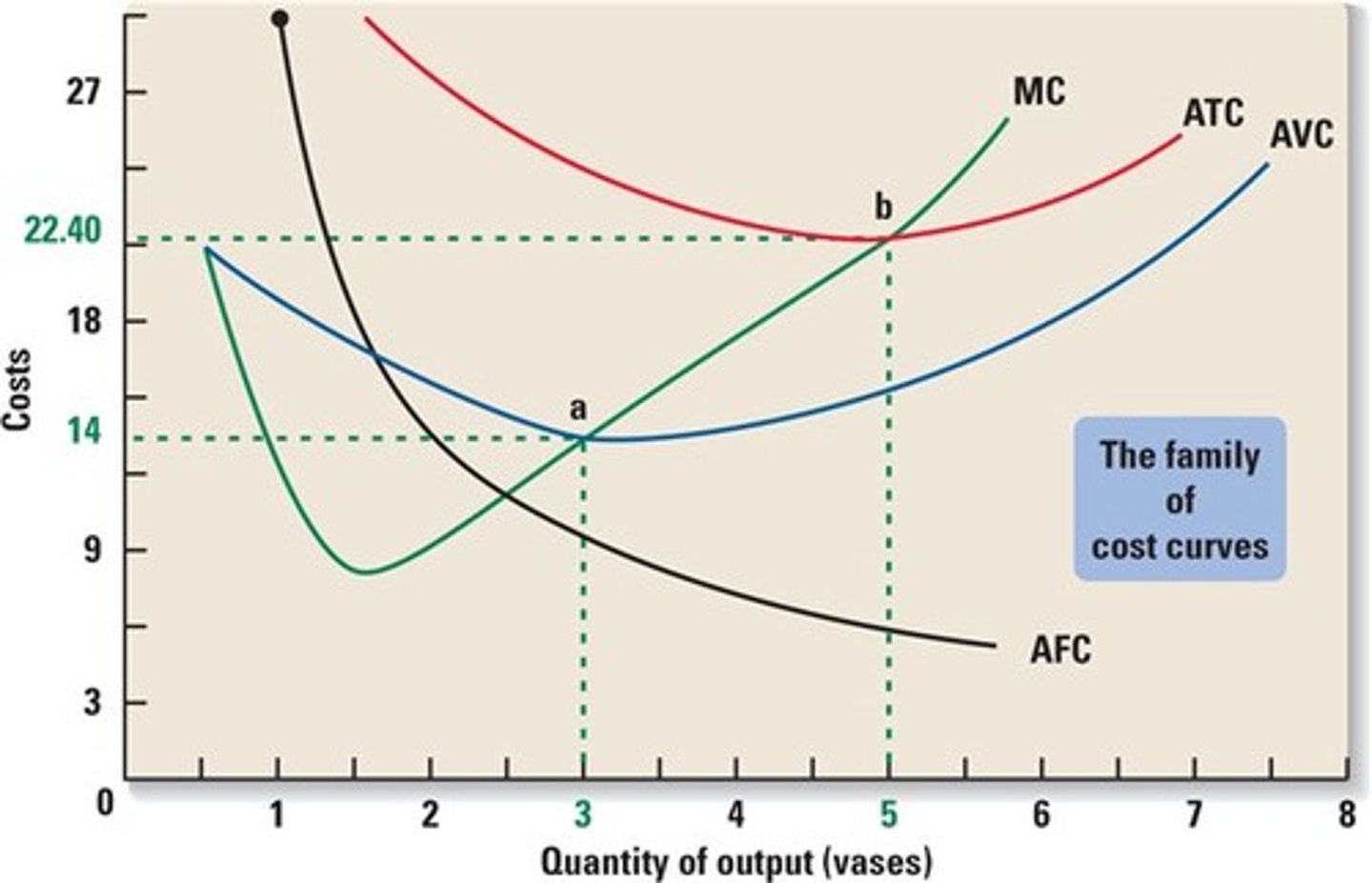
Average Variable Cost Curve
never crosses the average total cost curve.
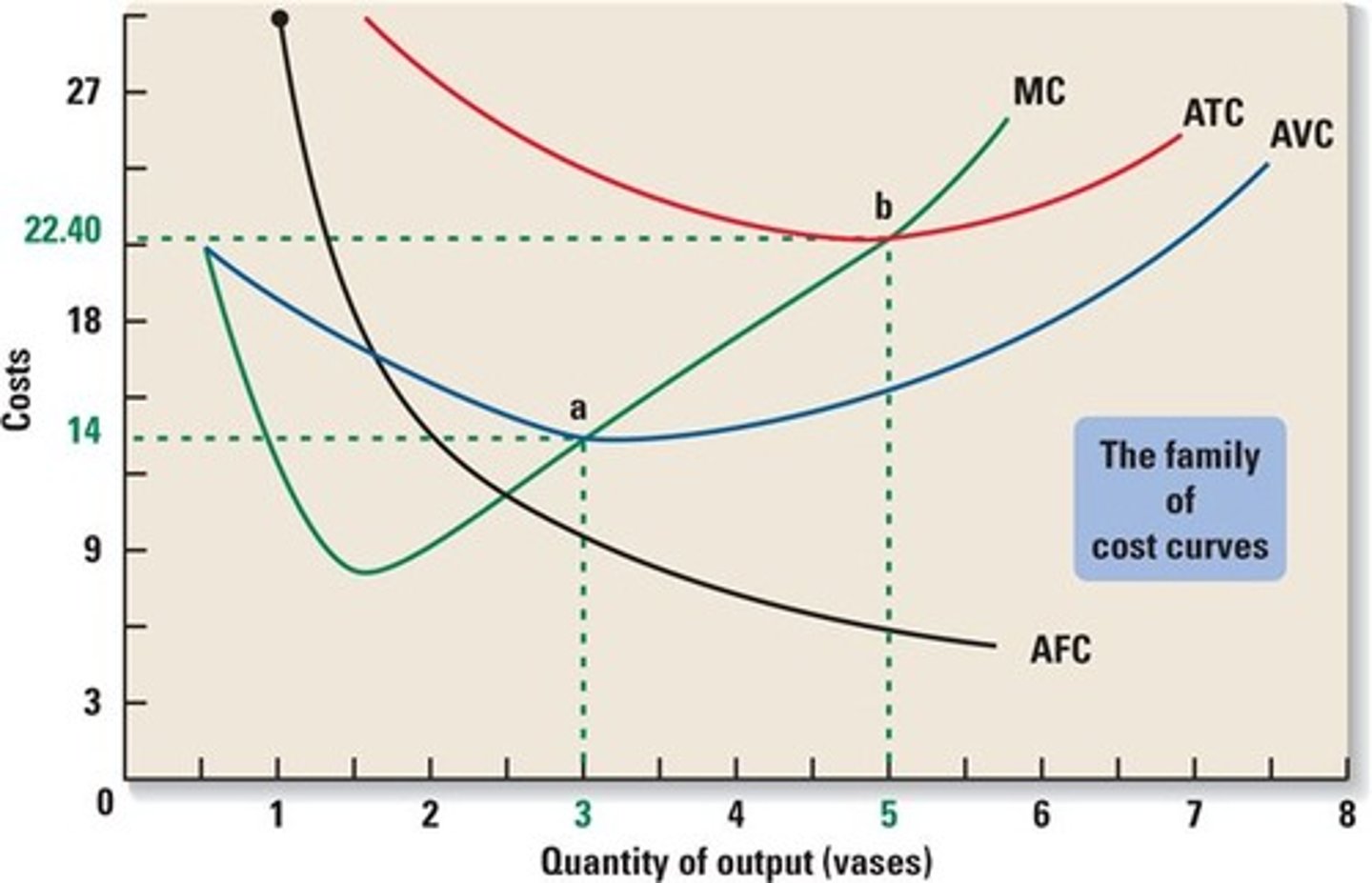
Average Total Cost Curve
shows the relationships between ATC and qty produced. at small production quantities, the ATC are high, with more production, costs decrease then eventually rise. the vertical sum of AVC and AFC
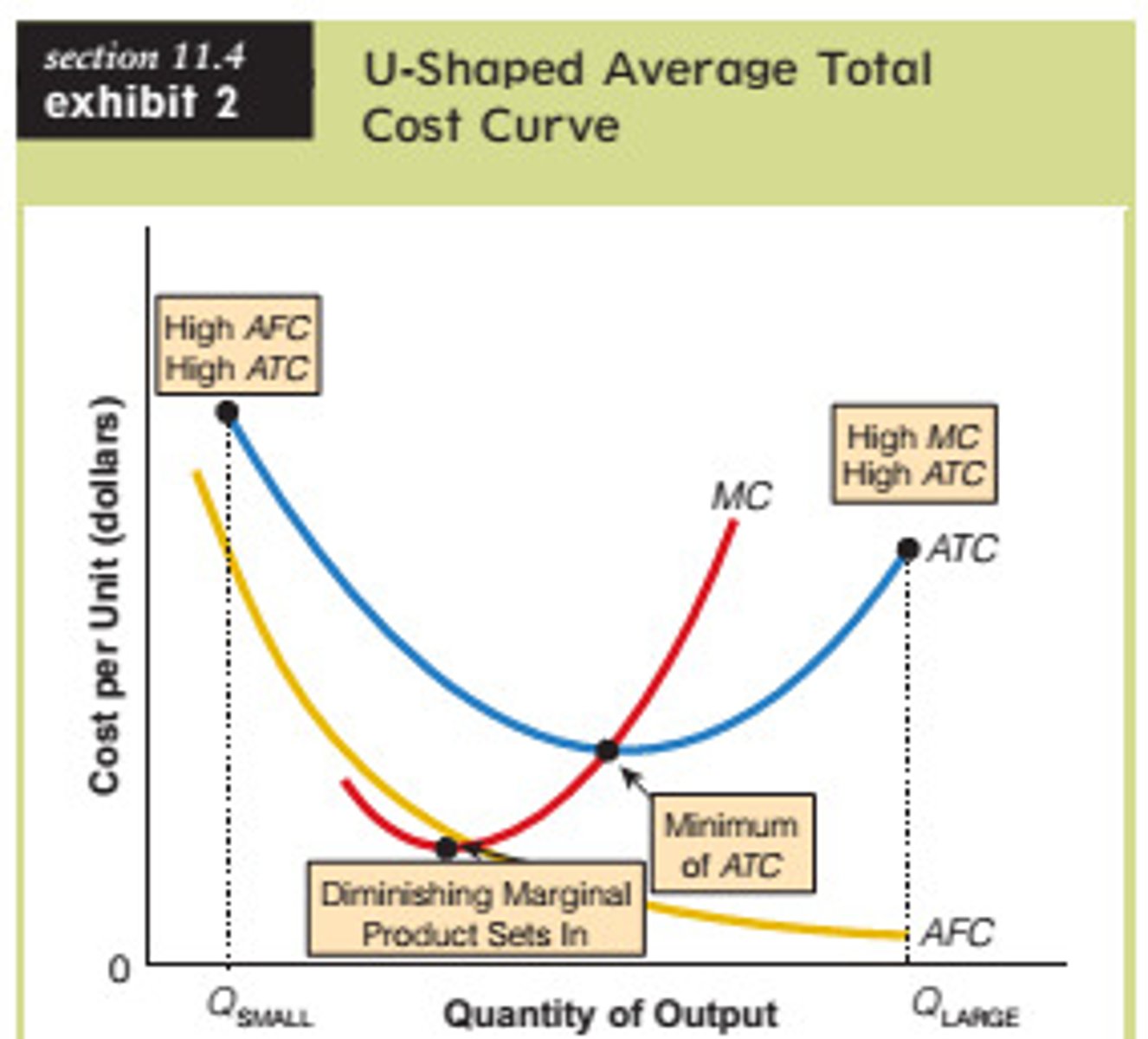
market dynamics
every time you see one of these signs
- Store for Lease
- Going out of business
- Now open
- close-out model
- under new management
The Invisible Hand
individuals act in their own interests
- aggregate outcome is collective well-being
Profit motive
- produces highly values goods and services
- allocates resources to their highest value use
(Lebron James doesn't not wait tables)
Accounting Profit
total revenue - explicit costs
- easy to compute
- easy to compare across firms
Explicit costs
payments firms make to purchase
- resources (labor, land, etc.) and
- products from other firms
implicit costs
the opportunity costs of the resources supplied by the firm's owners
normal profit
the difference between accounting profit and economic profit
- normal profits keep the resources in their current use
Person X earns about $10,000. C has an accounting profit of $15,000. Should X keep his job or open his own business?
open your own store, he has $5,000 extra. Take in OC
Economic Profit
= Accounting profit - normal profit
Rationing function
price distributes scarce goods to consumers who value them most highly
Allocative function
price directs resources away from overcrowded markets to markets that are underserved
Invisible Hand Theory
states that the actions of independent, self-interested buyers and sellers will often result in the most efficient allocation of resources
Responses to Profits and Losses
-Firms that earn normal profit recover only their opportunity cost
-firms that earn positive economic profit recover more than their opportunity cost
- markets in which firms are earning economic profit will attract resources
- markets in which firms are suffering economic losses will lose resources
Markets with excess profits attract resources
market price, standard supply and demand
- standard economic profit
Markets with supply increase
- lower market price
- supply shift to the right
- smaller economic profit
markets with zero economic profits
- smaller market price than with supply
- no economic profit
markets with resources leave
- smaller market price than zero economic profits
- negative economic profit